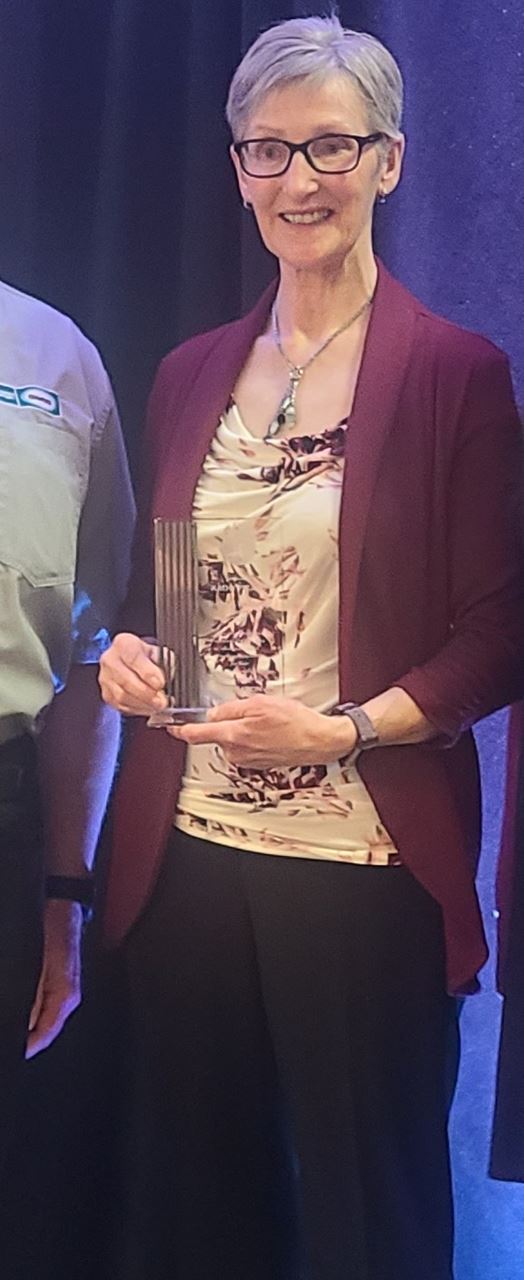For Immediate release
“Recreation Manitoba Announces 2022 Award Recipients”
Recreation Manitoba, the Manitoba organization dedicated to serving the Manitoba parks and recreation sector, has announced the recipients of its six major awards for 2022.
Recipients will be recognized at this year’s Recreation Manitoba Conference.
In announcing the recipients, President Emily George said “now more than ever parks and recreation has shown what an essential part of healthy and well communities they are. The sector includes so many people and organizations who lead by their example of dedicated service to their communities.”
“It is important for us to recognize the best of these in tribute to the award recipients but also to broadcast their accomplishments as encouragement to them and to others.”
Awards are presented to people or organizations in each of Recreation Manitoba’s four pillar areas of emphasis
- · Facilities (presented to Grande Pointe Homeowners Association),
- · Nature (presented to Dan Lester, St. Clements),
- · People & Community (presented to Gilles Durupt, Winnipeg),
- · Health & Wellbeing (presented to Kathy Picard, Lac du Bonnet).
Individuals, groups and organizations, and outdoor destinations are eligible for these awards.
Two outstanding individuals are also recognized through the Therapeutic Recreation Award of Excellence (presented to Nicole Perras, Misericordia Health Care) and Recreation Manitoba’s most prestigious honour, the Prairie Crocus Award, which recognizes an individual for significant contribution across the broad spectrum of Recreation Manitoba’s fields of interest (presented to Sharon Arsenault, Winnipeg
Recreation Manitoba 2022 Awards
Prairie Crocus Award
Sharon Arsenault (Recreation Technician – Sgt.  Tommy Prince Place)
Tommy Prince Place)
The Prairie Crocus Award honours a professional who has made a significant contribution to recreation, therapeutic recreation, parks and/or leisure services within the Province of Manitoba.
Sharon Arsenault has ‘done it all’ in recreation since entering the field about 35 years ago: special needs programming; preschool, children’s, family, and seniors programming; special events; staff training on computerized registration systems; and facility management.
For the past 13 years she has been at Sgt. Tommy Prince Place (formerly North Centennial Recreation & Leisure Facility). Her love of the facility has allowed her to help foster pride and ownership within the community and to help that community protect and value the facility.
She takes special pleasure from watching Sgt. Tommy Prince Place grow and flourish in its service to the community with a renewed family atmosphere where all ages can play together.
Therapeutic Recreation Award of Excellence
Nicole Perras (Misericordia Health Care)
The Therapeutic Recreation Award of Excellence recognizes and honours a therapeutic recreation professional who has made a significant contribution in the field of Therapeutic Recreation within the province of Manitoba.
Nicole Perras has worked in the Therapeutic Recreation field since 1998 and is recognized by her colleagues as a leader, an advocate for the profession and for her clients. She is always looking for opportunities to learn and grow as a therapeutic recreation professional and as a person to be able to recognize creative and innovative programs for the clients she supports.
In a career of service, the pandemic years have been particularly challenging and in early 2021 Nicole rose to the challenges. She was nominated as a Misericordia Health Care Warrior, recognizing outstanding work in the face of Covid-19.
She is an advocate for wellness in the workplace. As a passionately active member of both MHC’s Workplace Health & Safety and Fitness Committees, her ideas, attention to detail and organizational skills have been very important in making positive change within Misericordia Health Centre.
From larger-scale activity such as training students, thus contributing to the future of the Therapeutic Recreation professions, to very small ideas, such as using google translate and playing familiar music for clients who do not speak English, Nicole constantly demonstrates the importance of a creative approach in serving both her clients and her profession.
Guided by a belief that person centred care is essential, Nicole Perras is recognized by her colleagues as a role model and is a credit to the Therapeutic Recreation profession.
PILLAR AWARD: Facilities
 Grande Pointe Homeowners Association - Grande Pointe
Grande Pointe Homeowners Association - Grande Pointe
Recognizing a recreation facility, individual or group in Manitoba that demonstrates outstanding or unique innovations in providing places to gather, play and connect. Nominees have the capacity and passion to operate facilities and spaces, according to best practices and trends in the industry.
The Grande Pointe Homeowners Association has accomplished the development of a community centre and community park with extensive leisure and recreation opportunities through development and implementation of a multi-stage long-term plan. The group formed in 1997 to deal with the local issues following the ‘flood of the century’. Since, it has provided community leadership in the unincorporated residential community.
Beginning with the acquisition of 20 acres of land and ending with the recent opening of the Grand Pointe Community Centre, the group has accomplished much in just over 20 years and continues to work at implementing its vision for “a unique space focused on physical activity and accessibility”.
The Grande Pointe Park and Community Centre development began with the establishment of necessities such as well, pump house, retaining wall, driveway and parking lot but also flower beds and a picnic shelter with a brick floor. It now includes a stage for concerts, an outdoor multi-use sports pad which houses an outdoor rink in the winter time, a warm up shack, a natural playground with a swing designed for individuals with special needs, baseball diamonds with dugouts and bleachers, a soccer pitch, a beach volleyball court, outdoor fitness equipment, a fire pit area and a trail system along the Seine River.
The original vision of a multi-functional park for recreation and leisure has been met and surpassed with the addition of the community centre. Residents now gather at this central meeting place, year-round, for community events and celebrations as well as recreation and leisure purposes.
PILLAR AWARD: Nature
Dan Lester - St. Clements
Recognizing the passion and achievements of individuals, groups and organizations that steward recreational, natural, and green spaces that enhance community quality of life.
Dan Lester is the Executive Director of the Red River North Trails Association. He has been a part of RRNTA since 2004 and was RRNTA representative on Trails Manitoba from 2008 to 2015.
In this role, as well as through countless volunteer hours, he has been a tireless worker and significant contributor to the development of trails and trail systems. In particular, he has been directly involved in development and connection of the 400 kilometres of Trans Canada Trail from Great Falls, passing through the entire East Beaches region, Mars Hills, Beausejour, Selkirk, Lockport, and into Winnipeg.
He has negotiated partnerships with 10 different municipalities and the Trans Canada Trail central organization, has developed many private landowner’s use agreements, and has secured over a dozen permits through the various government departments for land use access and road crossings.
He has secured shared funding and cost-share grants from the province, estimated at over one million dollars, and has completed $1.2 million dollars’ worth of trail projects for Red River North Trails Association.
Dan has a deep appreciation for the value of recreation and strives to increase awareness of the opportunities that access to and use of trails can provide for individuals or families.
PILLAR AWARD: People & Community
 Gilles Durupt - Winnipeg
Gilles Durupt - Winnipeg
Recognizing recognizes the efforts and dedication of individuals, or groups, who lead and advocate the many benefits of the field.
Gilles Durupt is being recognized for a lifetime of volunteer service in the St Boniface community, at Le Centre Recreatif Notre Dame Recreational Centre, and in the hockey community with St. Boniface Minor Hockey and College Louis Riel High School. During most of his volunteer career he has served at the same time in both board leadership roles and hands-on coaching roles.
Among many examples of his leadership is the critical role he played as a member of the board of Notre Dame Recreational Centre when faced with the need to replace the ice plant in the arena. He worked as part of a team to facilitate installation of the new ice.
Gilles has actively coached hockey, baseball, and soccer and has made a difference in his athletes’ lives both as coach and supporter. He has encouraged many others to follow in his footsteps as both a coach and as a community volunteer and then maintained a continuing relationship as a mentor for those he encouraged into both roles.
Gilles is a champion of community development, Francophone culture, bilingual sports programs, and inclusion of everyone in the community in sport and recreation. He was the driving force behind the development of the St. Boniface Seals Minor Hockey program, the NDRC breakfast Club, bilingual hockey teams and coaches in St Boniface, and building more opportunities for the Recreation Centre to engage new community members including new Canadians. He has coached both male and female hockey teams to championships.
PILLAR AWARD: Health & Wellbeing
Kathy Picard - Lac du Bonnet
Recognizing nominees that have gone above and beyond to increase opportunities for their community to benefit mentally, physically and socially.
Kathy Picard has focused on community fitness in her retirement after a career as an Elementary Physical Education teacher. Always a role model for a health and wellness lifestyle, she is a promoter of recreation opportunities and a leader of a wide range of leisure and recreation activities in the Lac du Bonnet area.
She is the founder and president of the Lac du Bonnet Trails Association. She gets much of the credit for the realization of the dream to create the Bluewater Spur of the Trans Canada Trail. Through her work on developing trails in the area, she has secured funding to groom sections of trail for cross-country skiing.
Kathy was responsible for writing the funding applications to establish Pickleball in Lac du Bonnet and continues to be an organizer, including Pickleball skills sessions - whether it be an introductory course or specific skill building.
In winter, she spearheads an informal group of cross-country skiers to gather and ski together.
She established and continues to teach aerobic fitness classes for mature adults. These twice-weekly sessions have had a huge positive impact on the mental and physical well-being of the attendees. Targeting youth and concerns about physical and mental wellbeing during the pandemic, she volunteered to lead an after-school activity program called Mindful Hikes. The program had unanimous positive feedback from the parents of the children who participated.
Wherever there are healthy lifestyles initiatives in the Lac du Bonnet area, its likely Kathy Picard is a forefront or behind the scenes organizer and/or participant!